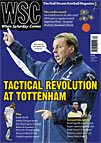 Media reaction to the violence that followed the north-east derby
Media reaction to the violence that followed the north-east derby
In the aftermath of crowd trouble at the Stadium of Light following Sunderland’s derby win over Newcastle on October 25, the comments made by Northumbria police were at distinct odds with the majority of press reaction. There were 29 arrests on the day, 11 of which were prompted by a pitch invasion at the final whistle. A police spokesman said that more arrests would follow based on CCTV evidence, suggested that drunkenness played a major role in the disturbances and expressed concerns about behaviour outside the ground. He believed the pitch invasion was not premeditated violence but a “spontaneous celebration which spilt over into confrontation”.
Any sort of violence around a match is regrettable, but this was hardly a sign of an impending hooligan apocalypse. That, though, is precisely the impression anyone would have got if their only source of comment was newspapers in the days following. The exaggerated tabloid reaction to any sort of crowd trouble, special mention to the News of the World’s headline World Wor III, was as expected. There were vivid descriptions of “80s style thuggery” as “violence flared between rival hooligans” and myriad references to the Stadium of something-that-rhymes-with-light (“fright” and “spite” being particular favourites).
But a sensationalist column by James Lawton in the Independent went the furthest. Lawton proclaimed these events as proof that we are on the brink of a return to the hooligan heyday of the mid-1970s – “The stench of mob anarchy is back on the terraces” – that the football authorities must make an example of the perpetrators with “significant deterrents before the rabble take hold again”. As well as suggesting that “the stadium of darkness” (a phrase used repeatedly) should be closed for two matches, Lawton also singled out Roy Keane for his fairly standard response to the crowd trouble. Keane condemned the pitch invasion – “It can’t be tolerated not just at our club but at any football club” – while praising the vast majority of fans: “If you think I’m going to sit here and criticise Sunderland supporters, you are wrong.” According to Lawton, this was a reaction “so spineless it seemed to underwrite all those years of Clockwork Orange violence that made English football the pariah of world sport”.
Expressions of disgust and despair are a stock-in-trade for columnists. Just as there is always some aspect of modern society that can be railed against and contrasted with a mythical halcyon past, so there are any number of social terrors, football violence being one, that have lain dormant waiting for their chance to burst into life. Yet particularly sensationalist untruths are unhelpful. Of course, those who broke the law should be punished and crowd-control measures need to be reassessed. But Lawton’s view that “the fans of both Sunderland and Newcastle attempted to establish mob rule… after breaking through cordons of police and security men” is, to anyone who has looked at the events with proper care, both factually untrue and irresponsible. Ed Upright
From WSC 262 December 2008